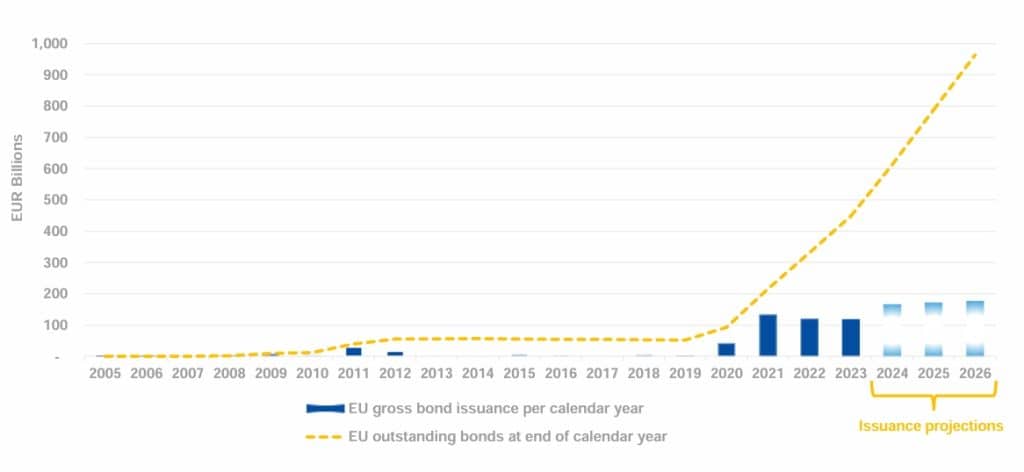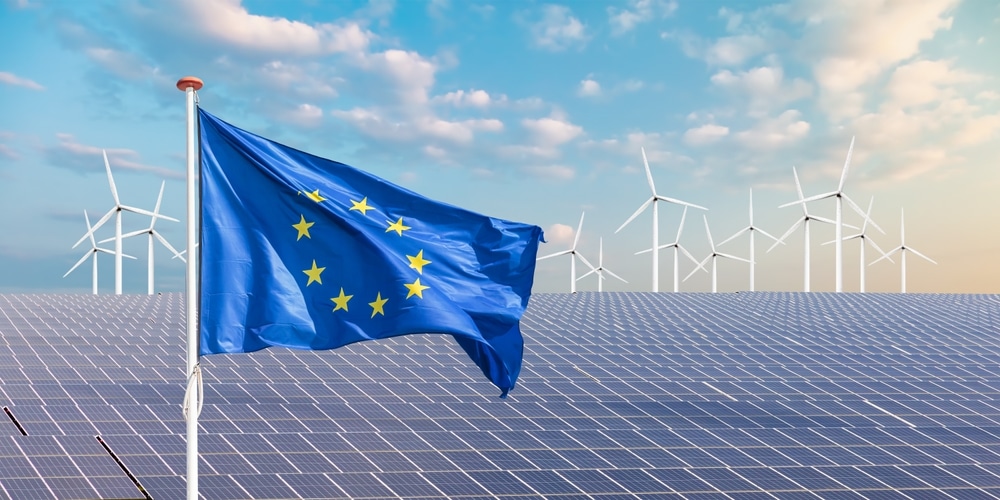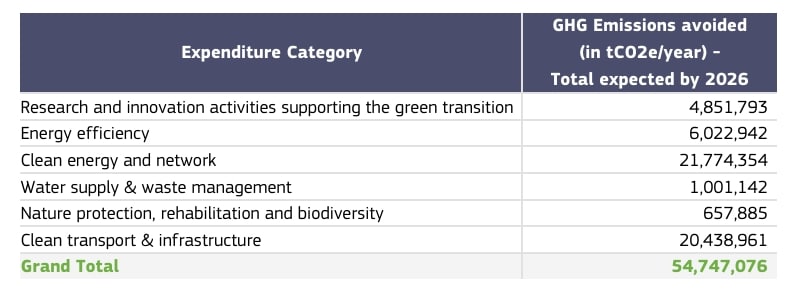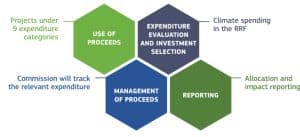The European Commission released its NextGenerationEU (NGEU) Green Bonds Allocation and Impact Report 2024 explaining how proceeds from green bonds are being used to combat climate change. The report highlights substantial achievements in reducing greenhouse gas (GHG) emissions. Therefore, the EU estimated that 55 million tons of CO₂ emissions should be avoided annually across the European Union to meet Europe’s net zero target.
Estimated impact per expenditure category
Source: EU Green Bonds Allocation and Impact Report 2024
Key Climate Impacts of EU’s Green Bond Projects
This year’s report has refined 2023’s methodologies for assessing the environmental impacts of green bond-funded projects. The findings reveal significant progress:
1. GHG Reductions
Projects funded by NGEU Green Bonds can avoid ~ 54.7 million tons of CO₂ annually. This is much higher than that of last year’s estimate of 44.2 million tons This accounts for approximately 1.5% of the EU’s annual emissions in 2022.
2. Sectoral Contributions
Investments focused on Clean Transport & Infrastructure in rail networks and zero-emission vehicles lead to a reduction in emissions. Clean Energy & Networks projects span solar and wind energy are significant. Additionally, Nature Protection and Biodiversity, sector although comparatively smaller, are also included in the analysis focusing on environmental restoration and preservation.
3. Methodology Enhancements
The analysis evaluated 2,096 milestones and targets robust quantifiable data. This expanded scope allows for a more comprehensive understanding of the climate benefits. Significantly, some sectors achieve higher emissions reductions per euro spent. Nonetheless, all investments must achieve climate neutrality by 2050.
NextGenerationEU: A Green Recovery Initiative
Launched in 2021, NextGenerationEU is an €800 billion recovery program meant to boost Europe’s post-pandemic recovery while advancing its green and digital transformation. The EU explains that the initiative aims to make the body more resilient and sustainable. A significant portion of its funding comes from NGEU Green Bonds, which play a critical role in financing climate-friendly projects.
To date, the EU has issued €12 billion in green bonds and notably, it’s the world’s largest green bond transaction. The European Commission plans to fund 30% of the NextGenerationEU program through green bonds. Consequently, this will make the EU the largest green bond issuer globally.
EU Bond Issuances
Strategic Importance of NGEU Green Bonds
NextGenerationEU Green Bonds are not only transforming Europe’s environmental landscape but also boosting global sustainable finance. Their benefits include:
- Sustainable finance commitment reinforces the EU’s dedication to environmental sustainability.
- Market liquidity introduces a highly rated and liquid green asset to investors.
- Investor confidence attracts a broader range of investors while offering portfolio diversification.
- Market growth inspires other issuers and strengthens the green bond market.
- EU leadership enhances the European Union’s role in sustainable finance globally.
The European Commission issues its NextGenerationEU Green Bonds based on a structured framework designed to ensure transparency and accountability. This framework aligns with international standards, setting a strong foundation for sustainable investments across the EU.
Inside the NextGenerationEU Green Bond Framework
The NextGenerationEU Green Bond framework revolves around four key pillars:
1. Use of Proceeds
Funds raised through these green bonds are allocated to nine key categories, including energy efficiency, clean energy projects, and climate change adaptation measures.
2. Expenditure Evaluation and Investment Selection
Investments are guided by the Recovery and Resilience Plans, which allocate 37% of their budgets to climate-related projects. These plans serve as the blueprint for the Recovery and Resilience Facility at the core of NextGenerationEU.
3. Management of Proceeds
The European Commission carefully monitors and tracks how the funds are spent, ensuring they are used for eligible green initiatives.
4. Reporting
The Commission provides two types of reports: Allocation Reports which highlight how funds have been distributed and Impact Reports demonstrate the achievements and environmental impacts of these investments. The first allocation report was released in 2022, followed by a comprehensive allocation and impact report in November 2023.
Source: EU
Alignment with Global Standards
Noteworthy, the framework adheres to the Green Bond Principles of the International Capital Market Association (ICMA), a global benchmark for green bond issuances. This compliance was independently verified by Vigeo Eiris, part of Moody’s ESG Solutions.
They confirmed that the framework aligns with the EU’s broader Environmental, Social, and Governance (ESG) strategy. Furthermore, the evaluation assures investors that the framework contributes immensely to Europe’s sustainability goals.
Financing Mechanisms and Future Goals
The European Commission utilizes diverse instruments such as EU bonds, EU bills, and NGEU Green Bonds to fund policy programs. Funding plans are communicated bi-annually, with €712 billion expected to be raised through NGEU bonds by 2026.
Additionally, the EU also highlighted that it leverages funding to support external needs, including financing loans for Ukraine. Under the Ukraine Facility, the Commission plans to raise €33 billion in EU bonds from 2024 to 2027.
EU Green Bond Supporting Europe’s Green Transition
The NextGenerationEU Green Bond framework is one of the key propellers of the EU’s fight against climate change. As outlined before it follows strict principles, ensures transparency, and provides detailed reporting to ensure that “every euro” raised supports environmental and economic resilience. Investments funded by NGEU Green Bonds span critical sectors like clean energy, transport, and nature restoration, highlighting the importance of diverse efforts to achieve net-zero emissions by 2050.
The EU’s proactive strategy, supported by robust funding and transparent practices truly makes it a leader in sustainable finance. By fostering innovation and scaling investments, NGEU Green Bonds are shaping a greener, more resilient Europe.
Source:




